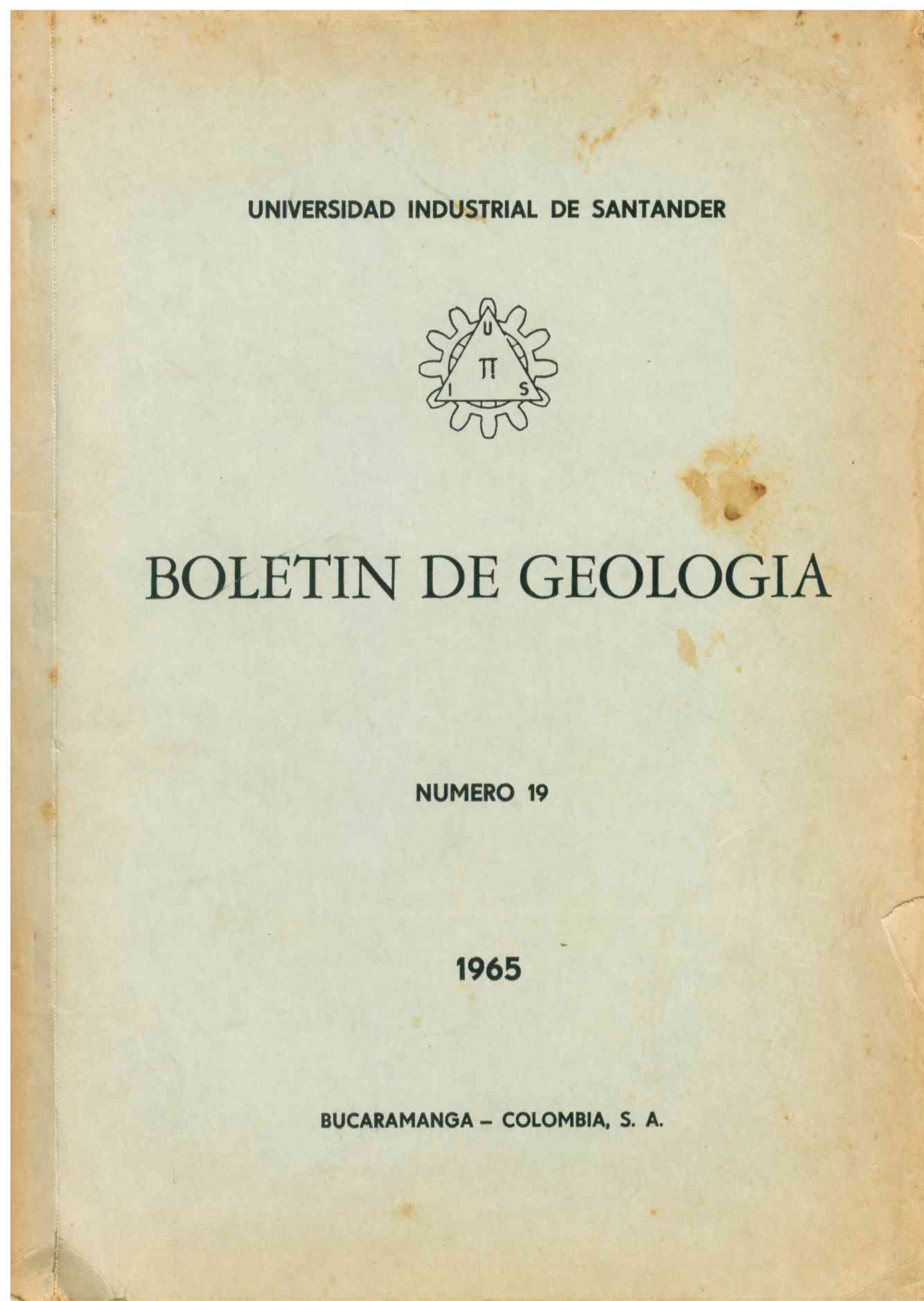The stratigraphy of the Upper Cretaceous and Tertiary in the Southern Middle Magdalena Valley
Published 1965-04-16
How to Cite
Abstract
The limit between the Middle Valley and the Upper Valley of the Magdalena River has been displaced from the city of Honda, where used to be located, to the latitude of Guataquí-Piedras, where is determined by the inverse fault of Cambrás which crosses the Magdalena River t the Guataquí level, and rest fossilized towards the W by the Cuaternarian deposits of the Ibagués’s Cone. Applying a litostratigraphic nomenclature to the Cretacic sediments of the Girardot-Guataquí barrier, were differentiated from the bottom to the top, the following units: Hondita Formation, 90 m; Loma Gorda Formation, 167 m; Olini Group composed by the Lidita Inferior with 35 m, the Lutitas y Arenas level with 65 m, and the Lidita Superior with 50 m; Lutitas y Arenas Level, 75 m; La Tabla Formation, 91 m. The age of the Cretacic succession includes from the Turoniense to the Maastrichtien but at the present, the knowledge of the fauna does not permit establish more accurate chronoestatigraphic divisions. In the W edge of the Cordillera Oriental the upper Cretacic is represented by the Cimarrona Formation, which contacts the Tertiary of the Middle Magdalena Valley with The Cambrás Fault, being this fault the eastern limit to this section S of The Middle Valley. The Cimarrona Formation is divided from the bottom to the top in the following units: La Fría Member, 157 m; the Arenitas and Lutitas Level, 127 m; Zaragoza Member, 70 m; La Primavera Member, 76 m. The age of The Cimarrona Formation according to the foraminiphera should corresponds to the Maastrichtien. The Tertiary sediments are distributed in two areas: the Jerusalen-Guaduas Synclinal and the Middle Magdalena Valley. At the Jerusalen-Guaduas Synclinal outcrops the lowest Tertiary represented by the Seca Formation (ancient Guaduas Formation), Hoyón Formation divides in the following members: Cambao Member, 200 m; Lutitas Level, 130 m; Aguasclaras Member, 147 m; and Capira Member, 200 m; San Juan de Río Seco Formation (= ancient Gualanday Formation) divided in three memebers: Armadillos Member, 235 m; Almácigos Member, 299 m; y La Cruz Member; 202 m. Finally it was found the Santa Teresa Formation (= ancient La Cira Formation) which ends the Tertiary sedimentation in the Synclinal. In th Middle Magdalena Valley the Tertiary is represented by the Honda Group divided three formations: at the bottom the Cambrás Formation (= ancient Honda Butler’s) which does not outcrops in the studied region; San Antonio Formation (= ancient Butler’s Honda-Andesítico) which is divided in three members: Flor Colorada Member, 342 m; Los Cocos Member, 251m; and La Ceibita Member, 437 m. Finally Los Limones Formation that represents the top of the Honda. The Mesa Formation composed mainly by sediments obtained from the erosion of the volcanic rocks, is divided in the three members: Palmas Member, 80 m; Bernal Member, 204 m; and Lumbí Member, 61 m. The Mesa Formation is found only W of the Honda Fault where it rests normally over La ceibita Member of the San Antonio Formation from the Honda Group. The contact between the two units seems normal, without any apparent discordance. May be it can accepted a very weak progressive discordance. It this sense it is discussed the hypothesis that Mesa Formation represents a local facies of the Honda Group, and equivalent in part to Los Limones Formation. The age of the Tertiary sediments is difficult to establish because there is not paleontological data. May be it embraces from the Paleocene of the Pliocene, but to establish divisions between them it is not impossible. Data published in that sense are presented with the idea of coincide each litoestratigraphic units with a fixed level without paleontological foundations. The Quaternary is represented by a series of cones which descend from the Cordillera Central and some reach the Magdalena River. Among the more important are: Lérida Cone, Ibague Cone, and Venadillo Cone. The other Quaternarian deposits correspond to terraces and to a continuous stratum of alluvium which extend out through the edge of the Cordillera Oriental. Structurally the Middle Magdalena Valley extreme S corresponds to a semigraben sunk towards E. Limits with the Cordillera Oriental by the inverse fault of Cambrás. Meanwhile towards the W the Honda Group deposits are transgressors over the Cordillera Central. This arrangement of semigraben sunk towards E produces in the neighborhood of the Cambrás Fault the maximum thickness.
